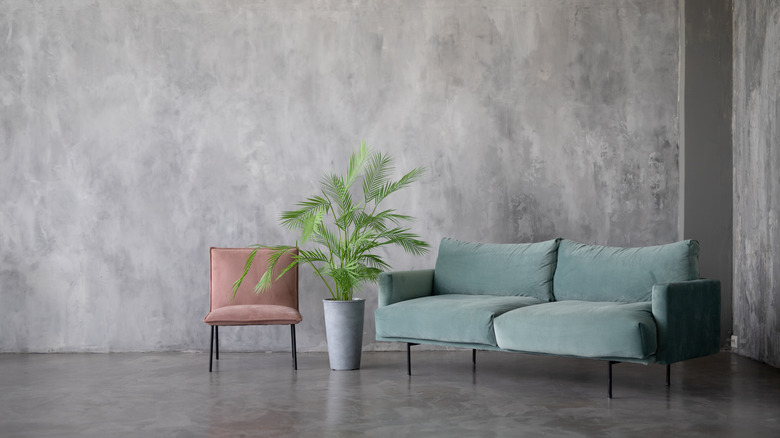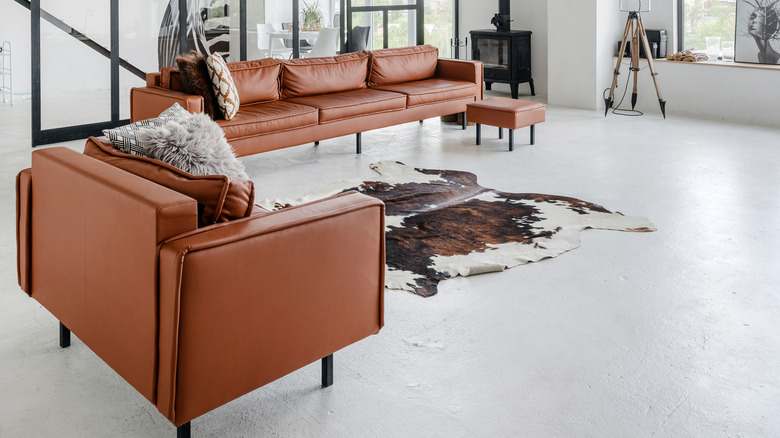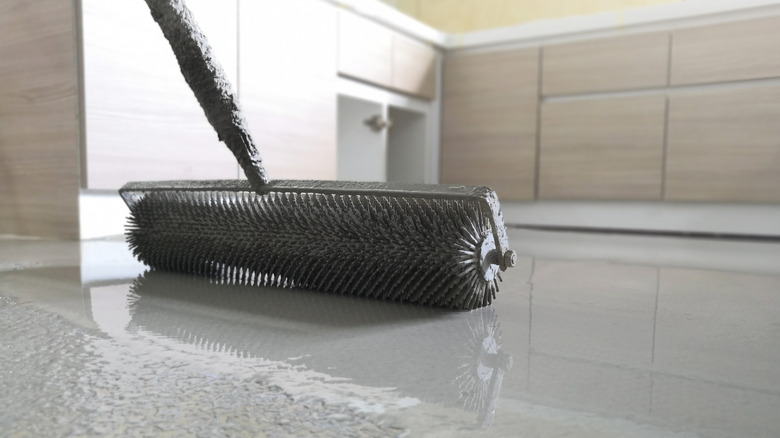How To Know If Concrete Flooring Is Right For Your Space
Many people have a concrete floor in their basement or garage that serves as a durable foundation for the rugged work that often happens in these environments. However, this material can also shine in other areas of the home; you may even want to consider it for your living room or kitchen. But is it suitable for your needs? If you're looking for competitively priced, durable flooring with ample texture and color options (and don't mind some routine upkeep), it could be a good investment.
Many find concrete floors exceptional because they can be transformed with stamping, coloring, and texturing to match the style of any space. That sounds great from an aesthetic point of view, but there is plenty more to consider. In truth, this variety of flooring has some drawbacks. For one, concrete floors can feel cold and unwelcoming under your feet, especially when waking up in the morning. They also absorb moisture in humid environments. Regarding upkeep, in addition to properly cleaning concrete floors, you may have to update them with a sealer and paint them to achieve your desired look. To know if concrete floors are right for your space, consider their benefits and drawbacks along with your unique interior goals.
Benefits of concrete flooring
Concrete flooring offers homeowners some enticing advantages, including the ability to withstand scratch marks from your dog's nails. It's also stylistically versatile in that it can be designed to look like wood, tile, or a range of other materials, often with a unique texture or smooth appearance. There are also numerous color options since concrete can be mixed with dye. You can also opt for concrete surface applications on top of your subfloor, much like tile or stamping.
Cost-wise, a simple concrete overlay of your existing floor is the least expensive option, typically ranging from $2 to $6 per square foot. Finishes such as polishing or adding a specialized stain will increase the cost, typically up to $14 per square foot. However, opting for textures and unique patterns is more expensive, often requiring refined skill and artistry. That can raise the costs to range from $15 to $30 per square foot. High-end porcelain tile, by comparison, may cost as much as $40 per square foot.
Drawbacks of concrete floors
Before installing a concrete floor in your living room, consider the potential challenges you may face. First, you'll likely need a professional installer since the process is somewhat complex and needs to be done correctly to minimize cracking or putting too much weight on the floor joints. Also, the job is likely to take more than a couple of days, especially if you opt for a high-end finish.
Note, too, that the durability of concrete can cause concerns. For instance, you wouldn't want a small child to fall and bump their head on this surface. And if you drop something valuable, your keepsake is likely to shatter while the floor remains undisturbed.
There are also long-term considerations that are worth noting. For example, concrete floors may impact your ability to sell your home at a high price if the work isn't done with careful attention to detail or maintained well over time. You'll also need to monitor them closely, as cracking and crumbling can occur, especially in humid environments. For this reason, it's essential to maintain your investment as it ages, such as by painting concrete floors as they wear down to preserve their beauty.


